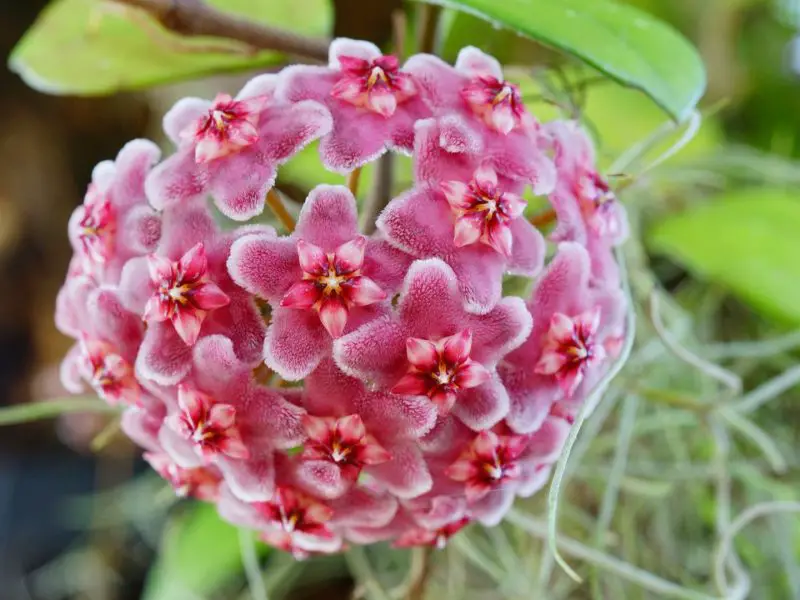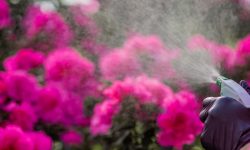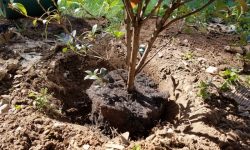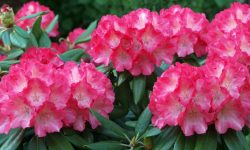Want more of those stunning waxy vines trailing gracefully across your home? Propagating your own hoya plant is easier than you think—and incredibly rewarding. Whether you’re a houseplant newbie or a seasoned collector, learning how to propagate hoya plant opens the door to endless greenery and gorgeous new growth without spending a dime.
In this complete guide, you’ll discover the easiest and most effective ways to multiply your hoya vines using water, soil, or sphagnum moss. With just a few cuttings and the right care, you’ll soon have lush new plants to keep, gift, or expand into your dream indoor jungle. Let’s dive into the art of hoya propagation.
Understanding the Best Time to Propagate Hoya Plants

Timing plays a significant role in the success of hoya propagation. The best time to propagate a hoya plant is during its active growing season, which typically falls in spring and early summer. During this period, warmer temperatures, longer daylight hours, and increased humidity create ideal conditions for root development. Cuttings taken at this time are more likely to root quickly and grow into strong, healthy plants.
Avoid propagating during the dormant season—late fall and winter—when the plant slows down its metabolic processes. During this time, cuttings are less responsive, roots form much slower, and the risk of rot increases significantly due to stagnant moisture and reduced light. Even with artificial lighting or heated environments, winter propagation often yields less consistent results.
For the best success, take cuttings on a warm day with stable indoor temperatures around 70–80°F. If you live in a tropical or subtropical climate, hoyas may grow year-round, giving you more flexibility with timing. However, observing your plant’s behavior—such as new leaf growth or fresh tendrils—is always the best indicator that it’s ready to be propagated.
Choosing the Right Type of Hoya for Propagation
Not all hoya varieties propagate with the same ease. Some popular types like Hoya carnosa, Hoya pubicalyx, and Hoya obovata are especially beginner-friendly thanks to their sturdy stems, quick root development, and reliable growth after cutting.
More delicate varieties such as Hoya linearis, Hoya curtisii, or Hoya retusa may be slightly trickier to propagate. They require higher humidity and good air circulation to prevent stem rot. Variegated types like Hoya ‘Krimson Queen’ can also be propagated, though they may root more slowly due to lower chlorophyll levels.
Whichever variety you choose, make sure the mother plant is healthy, pest-free, and actively growing. A thriving hoya will produce stronger, more viable cuttings that root successfully and grow into lush new vines.
Essential Tools and Materials for Hoya Propagation
Preparing the right tools and materials before you begin makes the propagation process smoother and increases your chances of success. Start with a clean, sharp pair of scissors or pruning shears, and always sterilize the blades with alcohol to prevent disease.
For water propagation, use a clear glass jar to keep the node submerged and monitor root growth. For soil or moss propagation, choose small pots with drainage holes and use a well-draining mix—such as potting soil combined with perlite and orchid bark. Sphagnum moss should be soaked and wrung out before use.
A spray bottle filled with clean water helps maintain humidity, especially when using a humidity dome, clear container, or plastic bag to cover the cuttings. Rooting hormone is optional but can speed up root formation, particularly for slower-growing varieties.
With these basic supplies ready, you’ll be able to work efficiently and provide ideal conditions for healthy, successful hoya propagation.
How to Take Healthy Hoya Cuttings
Taking the right cutting is one of the most important steps in successful hoya propagation. A healthy cutting gives your plant the best chance to develop roots quickly and grow into a vigorous new vine.
Begin by selecting a mature, healthy vine from the mother plant. Look for stems that are firm, green, and free from any signs of pests or disease. Avoid soft, overly young growth or stems that are flowering, as these are less likely to root successfully.
The ideal cutting should be around 4 to 6 inches long and include at least two to three leaf nodes. Nodes are the small bumps or joints on the stem where leaves and roots emerge. Use clean, sharp scissors or pruning shears to make a precise cut just below a node. This is the point where new roots will most likely develop.
Remove the leaves from the bottom one or two nodes, leaving only the top set of leaves intact. This reduces moisture loss and allows the plant to focus its energy on root formation rather than maintaining unnecessary foliage. If the remaining leaves are large, you can trim them slightly to reduce transpiration without harming the cutting.
After preparing your cutting, you can let the cut end callus for a few hours, especially if you’re rooting in soil or moss. This helps prevent rot and gives the wound time to dry slightly before being placed in a moist environment.
Healthy cuttings taken with care and precision are far more likely to root quickly and grow into strong, vibrant hoya plants. Taking time to do this step properly lays the foundation for successful propagation.
Propagating Hoya in Water
Water propagation is one of the easiest and most popular methods to root hoya cuttings, especially for beginners. It allows you to clearly monitor root development and catch any signs of rot early.
To begin, place the prepared hoya cutting in a clean glass or jar filled with room-temperature water. Make sure that at least one leaf node is submerged, as this is where roots will emerge. Keep the remaining leaves above the water to avoid decay. Use filtered or distilled water if possible to prevent mineral buildup.
Position the jar in a warm, bright spot with indirect sunlight. Avoid placing it in harsh light, which can overheat the water and damage the cutting. Change the water every few days to keep it fresh and oxygenated, reducing the risk of bacteria or algae.
Roots usually begin to appear within two to four weeks, depending on the environment and the hoya variety. Once the roots are at least one to two inches long, you can transplant the cutting into soil or another growing medium to continue its development.
Water propagation is not only simple but also rewarding, letting you watch each stage of growth up close and ensuring your hoya cutting transitions smoothly into a thriving new plant.
Propagating Hoya in Soil
Soil propagation is a practical and efficient method that allows hoya cuttings to establish roots directly in their growing medium, minimizing transplant shock later on. This method is especially suitable if you want your cuttings to develop a strong root system in a more permanent environment from the start.
Begin by preparing a small pot with excellent drainage. Use a well-aerated mix of perlite, orchid bark, and peat moss or coco coir. This kind of soil ensures moisture retention while preventing waterlogging, which is critical for avoiding rot.
Select a healthy cutting with at least one or two nodes and remove the lower leaves. Insert the cutting into the soil so that at least one node is beneath the surface. Mist the surface lightly, then cover the pot with a plastic bag or humidity dome to create a warm, moist environment ideal for root growth.
Place the container in a bright location with indirect sunlight. Avoid overwatering—just keep the soil slightly moist. Roots typically begin forming within four to six weeks. You’ll know the cutting has rooted when you see new leaves or feel resistance when gently tugging on the stem.
Soil propagation is ideal for growers who want to skip the water-to-soil transition and establish robust, soil-adapted roots from the beginning.
Using Sphagnum Moss for Hoya Propagation
Sphagnum moss offers a perfect balance of moisture and airflow, making it an excellent medium for rooting hoya cuttings. Its loose texture prevents rot while holding enough humidity to stimulate root growth.
To start, soak the moss in water, then wring it out so it’s damp, not wet. Fill a small container with the moss and insert a healthy hoya cutting with at least one node resting on the surface. Avoid burying the leaves. Cover the container with a plastic lid or bag to create a humid environment.
Place it in bright, indirect light and open the lid occasionally for airflow. Roots typically appear within 3–5 weeks. Once they grow strong and reach about an inch long, you can transplant the cutting into soil. This method is especially useful if you want to monitor rooting while avoiding waterlogged conditions.
How Long It Takes for Hoya Cuttings to Root
The time it takes for hoya cuttings to develop roots largely depends on the propagation method used, the specific hoya variety, and growing conditions such as temperature, humidity, and light exposure. On average, most hoya cuttings will begin to form roots within 2 to 4 weeks. However, visible root development doesn’t always mean the cutting is ready for transplanting.
In warm and humid environments—ideally between 70°F and 80°F with bright, indirect light—cuttings root more efficiently and often show signs of growth sooner. Water propagation tends to produce visible roots a bit faster, sometimes in as little as 10 to 14 days, but these roots are often delicate and need more time to strengthen before potting in soil. Cuttings propagated in soil or sphagnum moss may take slightly longer to sprout roots but often develop stronger, more transplant-ready root systems.
Some slow-growing hoya species may take over a month to root, and during cooler months or in drier air, the process can be delayed further. Using a humidity dome or placing cuttings in a warm, bright spot can speed up the rooting process. Regardless of the method, gentle handling and patience are essential to ensure the roots mature enough to support new vine growth after transplanting.
Caring for Rooted Hoya Cuttings
Common Mistakes to Avoid During Hoya Propagation
Even though propagating hoyas is relatively simple, several common mistakes can lead to poor rooting, rot, or weak growth. Understanding what to avoid can significantly improve your success rate and help your cuttings develop into thriving new plants.
Using Unhealthy or Improper Cuttings
One of the most frequent errors is taking cuttings from weak or unhealthy plants. Cuttings should always come from mature, vigorous vines with at least one healthy node and a few leaves. Avoid using stems that are too young, overly woody, or already damaged, as they are less likely to root and thrive.
Overwatering or Letting the Medium Stay Too Wet
Hoya cuttings are highly prone to rot if they’re kept in overly wet conditions. Whether you’re propagating in water, soil, or sphagnum moss, it’s important to strike a balance. In water, make sure only the node is submerged and change the water frequently. In soil or moss, maintain moisture without allowing the medium to become soggy. Good drainage and airflow are essential to prevent fungal issues.
Placing Cuttings in Harsh Light
Direct sunlight can quickly stress or burn hoya cuttings, especially when they are still developing roots. A bright, indirect light source is ideal during the rooting phase. South- or east-facing windows with filtered light are perfect. Harsh sun will dry out the cutting too quickly, while low light will slow root formation.
Failing to Label Different Hoya Types
If you’re propagating multiple types of hoyas at once, always label each cutting clearly. Different varieties may have different rooting speeds and care needs. Keeping them organized allows you to track progress, adjust conditions if necessary, and avoid mix-ups later when potting them up.
Being Impatient or Checking Roots Too Early
It’s tempting to check for root growth every few days, but this can disrupt the fragile rooting process. Frequent handling increases the risk of damaging new roots or introducing pathogens. Instead, monitor new growth above the surface—new leaves are a good sign that roots are developing below.
Ignoring Environmental Conditions
Temperature, humidity, and air circulation all play important roles in hoya propagation. Keeping cuttings in an area that is too cold or drafty will slow down rooting. Aim for consistent warmth (around 70–80°F) and moderate to high humidity, especially if you live in a dry climate.
By avoiding these common mistakes and paying close attention to your setup and care routine, you’ll significantly boost your chances of producing strong, healthy hoya plants from cuttings. Patience, observation, and consistency are key to propagation success.
Encouraging Strong Root Development
To encourage strong root development in Hoya cuttings, it’s important to begin with healthy, disease-free stems that include at least one node. Use a sharp, sterilized cutting tool to make clean cuts, as ragged edges can delay root growth or introduce pathogens. The rooting medium plays a critical role—opt for a well-draining, airy mix such as damp sphagnum moss, a combination of coco coir and perlite, or even lightweight potting soil designed for houseplants. These media help maintain consistent moisture without waterlogging, which is key to preventing rot.
Place the cuttings in a warm, humid environment with indirect bright light, ideally maintaining temperatures between 70–80°F (21–27°C) and humidity around 60–80%. A humidity dome, plastic bag, or propagation box can help retain moisture and create a stable environment for rooting. Applying a rooting hormone is optional but can significantly speed up the process, especially with semi-woody stems or slower-growing varieties.
Patience is essential—avoid disturbing the cuttings for at least a few weeks. When roots begin to form, typically after 3–6 weeks, you can begin introducing gentle air circulation and gradually acclimating the new plant to drier conditions. Once the roots are an inch or two long and branching, you can transplant into a more permanent pot and begin a light fertilizing routine to support healthy, sustained growth.
When and How to Transplant Rooted Cuttings
Once your Hoya cuttings have developed strong roots—typically 1.5 to 2 inches long—they’re ready for transplanting into soil. This usually occurs around 4 to 8 weeks after propagation, depending on the method used and growing conditions. The best time to transplant rooted cuttings is during the active growing season, especially in spring or early summer, when Hoyas are more resilient and responsive to changes.
Begin by gently removing the cutting from its propagation medium, whether it’s water, moss, or soil. Be careful not to damage the delicate new roots during this process. Prepare a small pot with excellent drainage and fill it with a light, airy potting mix—ideally a blend of orchid bark, perlite, and a bit of cactus or succulent soil to mimic the Hoya’s native conditions. Make a hole in the center and carefully place the cutting so the rooted node is just beneath the surface of the soil. Lightly firm the soil around the base and water thoroughly until it drains from the bottom of the pot.
After transplanting, keep the cutting in a warm spot with bright, indirect light. Maintain moderate humidity and avoid placing the plant in direct sunlight, which can stress the young roots. Hold off on fertilizing for the first few weeks to let the plant adjust. Once it shows signs of new growth, you can begin feeding it with a diluted, balanced fertilizer every 4–6 weeks. With proper care, your young Hoya will settle into its new home and begin to thrive.
How to Multiply Hoya Vines for a Fuller Look
To multiply Hoya vines for a fuller, bushier plant, propagation and strategic pruning work hand in hand. Start by taking healthy cuttings from mature vines, ideally just below a node where leaves and aerial roots emerge. Choose cuttings with at least 2–3 leaf nodes and propagate them in water, soil, or sphagnum moss depending on your preference and environment.
Once rooted, you can plant multiple cuttings together in a single pot. This is the key to achieving a lush, full appearance rather than a single trailing vine. Grouping several young plants creates a dense base and allows multiple vines to grow upward or cascade simultaneously. When planting, space the cuttings evenly around the edge and center of the pot to ensure balanced growth.
In addition to propagation, encourage fullness by pruning leggy or overly long vines. Cutting just above a leaf node prompts the plant to branch out, producing more stems and leaves over time. Each cut signals the plant to redirect energy into side shoots, resulting in a thicker, bushier shape.
Provide optimal growing conditions—bright indirect light, high humidity, and well-draining soil—to support vigorous growth. Rotate the pot occasionally so all sides receive light equally. With consistent pruning and propagation, you can transform a sparse Hoya into a stunning, full-bodied specimen.
Troubleshooting Propagation Problems
Troubleshooting propagation problems with Hoya involves identifying signs of stress early and adjusting care accordingly. If your cuttings fail to root, the most common culprits are too much moisture, lack of airflow, or insufficient light. Rotting stems or blackened nodes usually point to overwatering or poor drainage—try switching to a lighter medium or letting cuttings dry slightly before replanting.
If leaves wrinkle or yellow, check humidity and light levels. Hoyas prefer bright, indirect light and moderate humidity. Pale, weak growth may indicate too little light, while crispy edges suggest it’s too dry. Mold or fungus on sphagnum or soil means it’s staying too wet—ensure good air circulation and avoid sealing containers too tightly.
Lastly, be patient—some Hoya varieties root more slowly than others. Keep conditions stable and resist the urge to disturb cuttings too often, as movement can delay root development.
Benefits of Propagating Hoya at Home
Propagating Hoya at home offers several practical and rewarding benefits. First, it’s a cost-effective way to grow your collection without buying new plants. With just one healthy mother plant, you can create multiple new vines to fill out your space or share with others.
Home propagation also allows you to preserve rare or sentimental varieties that may not be readily available in stores. Additionally, watching roots and new growth develop is deeply satisfying and builds your skills as a plant parent. By controlling the propagation environment, you can ensure healthier, more resilient plants that adapt well to your home’s specific conditions.
Another great advantage of propagating Hoya at home is the ability to experiment with different methods—like water, soil, or sphagnum moss—to see what works best in your environment. This hands-on experience not only boosts your confidence but also helps you better understand your plant’s growth habits, making future care easier and more intuitive.
Frequently Asked Questions About Propagating Hoya plants
Final Thoughts on Hoya Propagation
Learning how to propagate hoya plants is a valuable skill that enhances your indoor gardening journey. With the right tools, timing, and care, anyone can successfully grow new hoyas from cuttings. Whether you prefer the simplicity of water propagation or the direct method of soil rooting, the process is accessible and rewarding. As your new vines grow and flourish, they not only add beauty to your home but also carry the memory of your nurturing hands. Embrace the process, be patient, and enjoy the journey of creating lush new growth from your beloved hoya plant.






